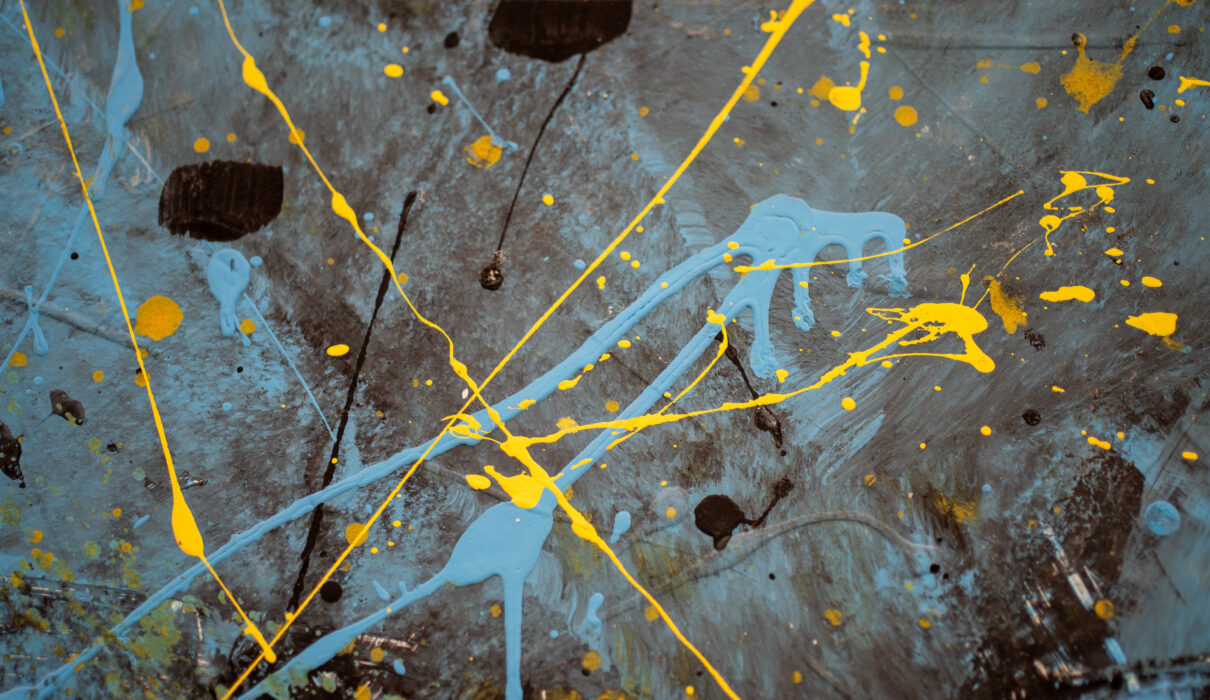Do you like abstract art? Although you may initially feel uncomfortable looking at works like Jackson Pollock’s, you’ll be surprised to learn that your brain processes these images as a challenge, something to try to understand at all costs…
Jackson Pollock, Wassily Kandinsky, Joan Miró, Paul Klee… Abstract art is not to everyone’s taste, but many people enjoy and take pleasure in these seemingly chaotic works. It is true that these canvases, dominated by imprecise strokes, strange shapes, stains here and there, impossible perspectives and arbitrary colours, generate a certain amount of confusion.
Now, as the film director, screenwriter and artist David Lynch points out , “beyond what we see, there is what each artistic manifestation makes us feel.” And in this sense, each person will get something different. Hence the magic and uniqueness of art as a psychological channel. Because, although it may surprise us, the brain is perfectly equipped to enjoy this type of expression.
It is true that most of us find greater pleasure in appreciating realistic paintings with clearly identifiable figures. We have works such as those offered by Rembrandt or Johannes Vermeer. However, with the arrival of Impressionism, human beings were exposed to a new phenomenon that was as stimulating as it was decisive artistically and neurologically.
So much so that we now have a new discipline that seeks to understand how the brain processes impressionist and abstract art: neuroaesthetics . The data it offers us is fascinating.
“The modern artist works with space and time and expresses his feelings rather than illustrating.”
-Jackson Pollock-
Believe it or not, your brain likes Jackson Pollock
Jackson Pollock was an abstract expressionist artist who left us around 400 paintings and 500 drawings. His way of working was somewhat unusual: he improvised and applied the technique of dripping paint. Anyone who looks at one of his canvases will first experience incomprehension and a sense of disorder.
What the brain feels when exposed to abstract art is frustration . After all, our neural circuit is programmed to identify patterns. It is true that it prefers order and everything that it can process and identify easily. However, if we are patient and spend a little more time with this type of work, something will happen.
Your brain likes Jackson Pollock more than you might think at first. It likes him because those abstract forms invite reflection, cognitive effort, analysis and imagination. Also, beyond getting an explanation of what we are seeing, what matters is the emotions that he arouses in us…
Abstract art frees us from reality
The University of Jerusalem conducted an interesting study in 2014 on abstract art. One thing that the researchers highlighted is that this artistic modality has one virtue: it frees the mind from everyday reality. It is a highly stimulating bridge to our inner universe, to our emotions and sensations.
As Jackson Pollock himself pointed out, the act of painting was for him a way of illustrating his own feelings and giving movement to his memories. For this reason, the act of placing ourselves in front of a work by Kandinsky, Tapies or Miró requires a small emotional and cognitive effort . It invites us to escape from what surrounds us, from what is ordinary, in order to allow us to transcend to other, more stimulating universes.
Neuroesthetics, the pleasure of finding order in the midst of the imprecise
Semir Zeki is a neurobiologist at University College London and has developed the discipline of neuroaesthetics. After many years of researching how the brain processes artistic manifestations, he comes to a very interesting conclusion.
The brain experiences great stimulation when looking at impressionist and abstract works . These blurry, imprecise, and messy images stimulate the amygdala , that region intimately related to our emotions. The first thing we feel is confusion, but it is a challenging confusion, full of curiosity.
If 20th century artists focused on giving greater importance to lines, color, shape, texture and light, it was to create a sensation in the brain. It is an invitation to transcend beyond the apparent and the real, to transport ourselves to other more intimate, perceptive, sensorial and even dreamlike scenarios…
Abstract art is good for your brain
You might find it hard to believe if we tell you that your brain likes Jackson Pollock. How can it like a canvas dominated by meaningless blobs of paint here and there? True, at first we all prefer images that are easy to recognize. However, it is enough to remember what artists like Pollock himself, Franz Kline and Mark Rothko were looking for when they painted.
Abstract art is a much-needed key to the subconscious, it is the door to our emotions and the hinge that favors detachment from reality . We all need to challenge the brain, to take it out of its comfortable settings to invite it to reflection, self-awareness and creative thinking.
Viewing these types of paintings stimulates higher stratum areas that favor both imagination and analysis and critical reasoning . After all, there are many dimensions of our world that cannot be represented by concrete figures. Let us think, for example, of such striking works as Pablo Picasso’s Guernica . The horror of war found another way of expressing itself in his art. One that leaves no one indifferent.


